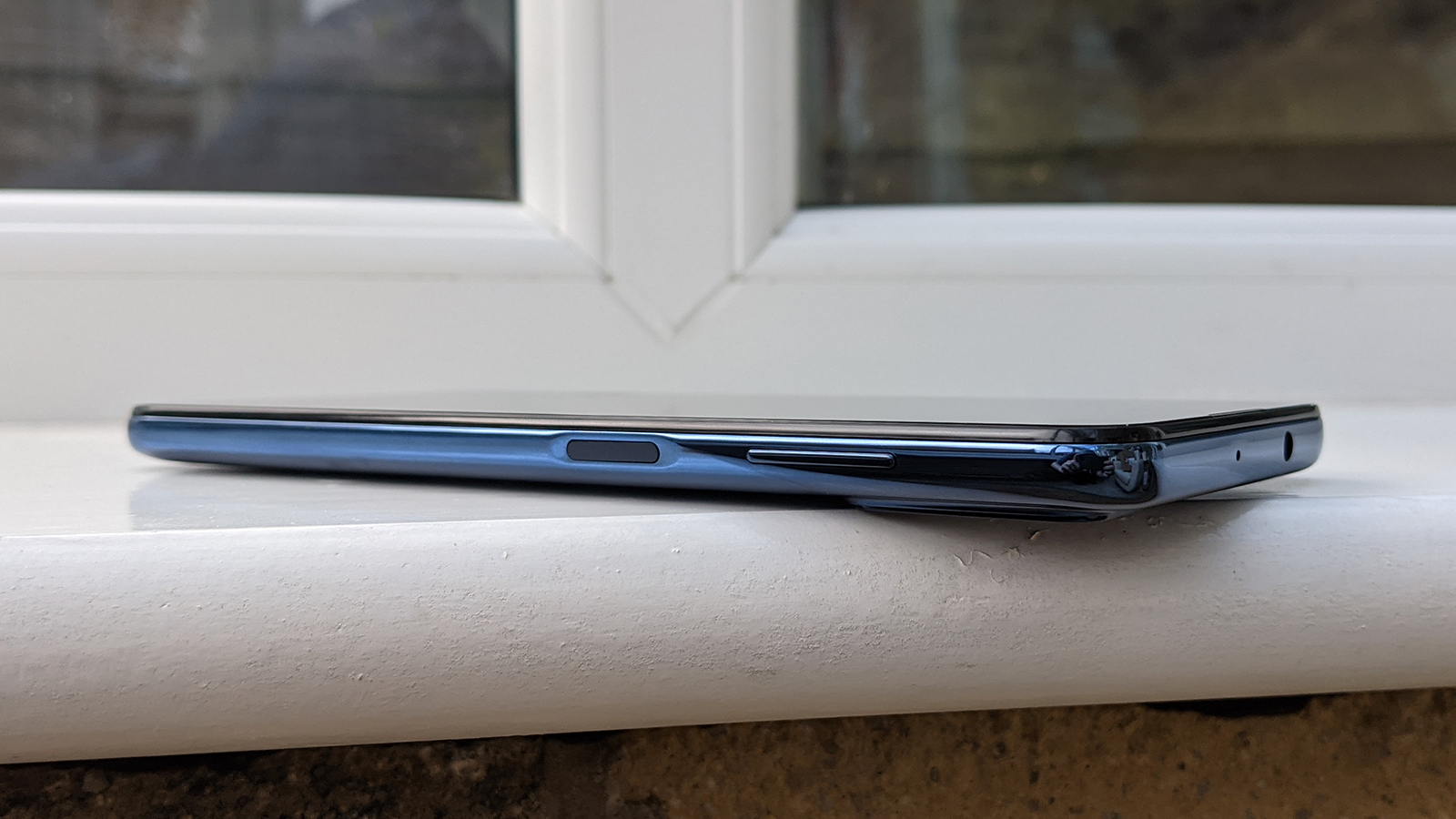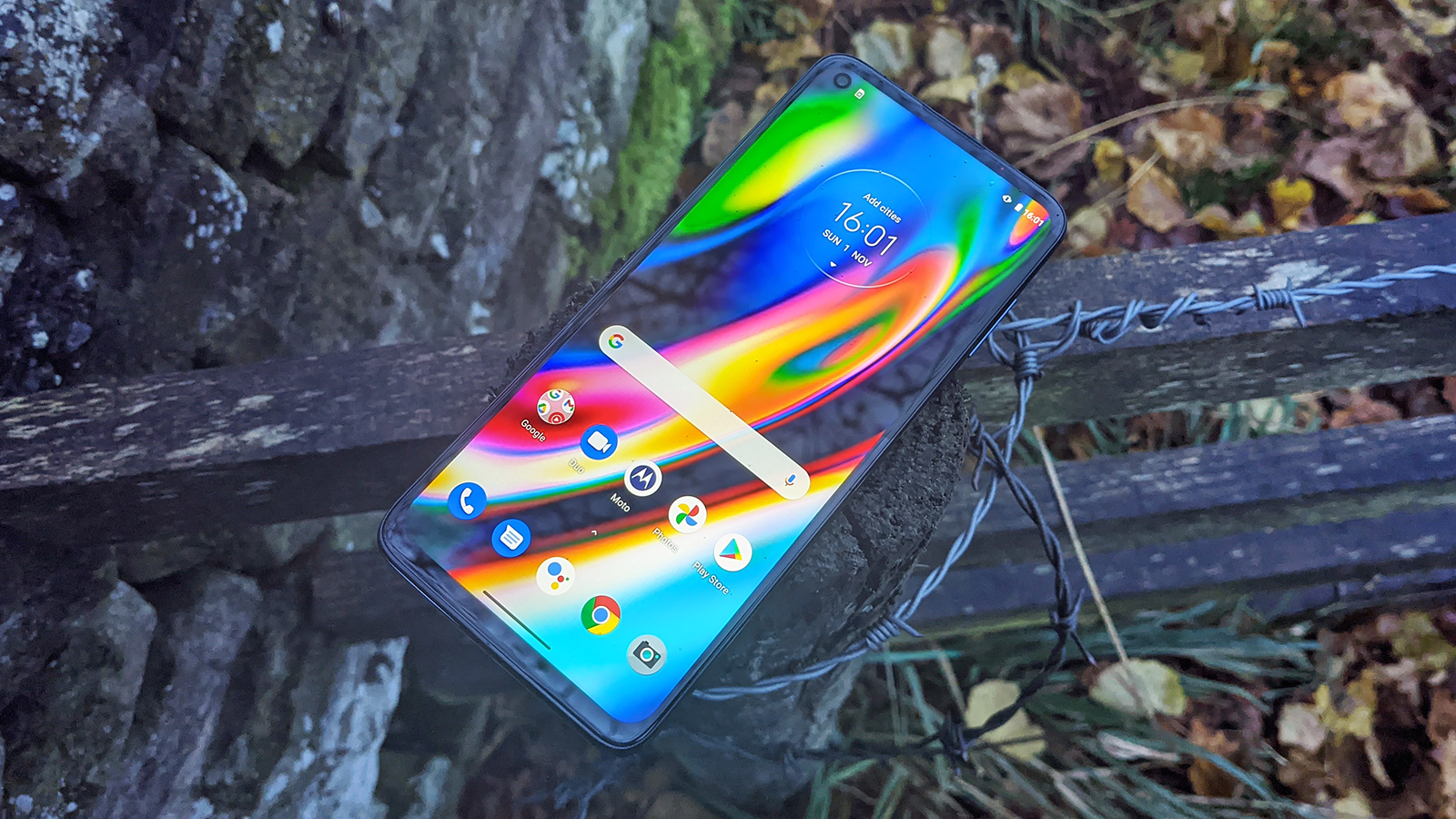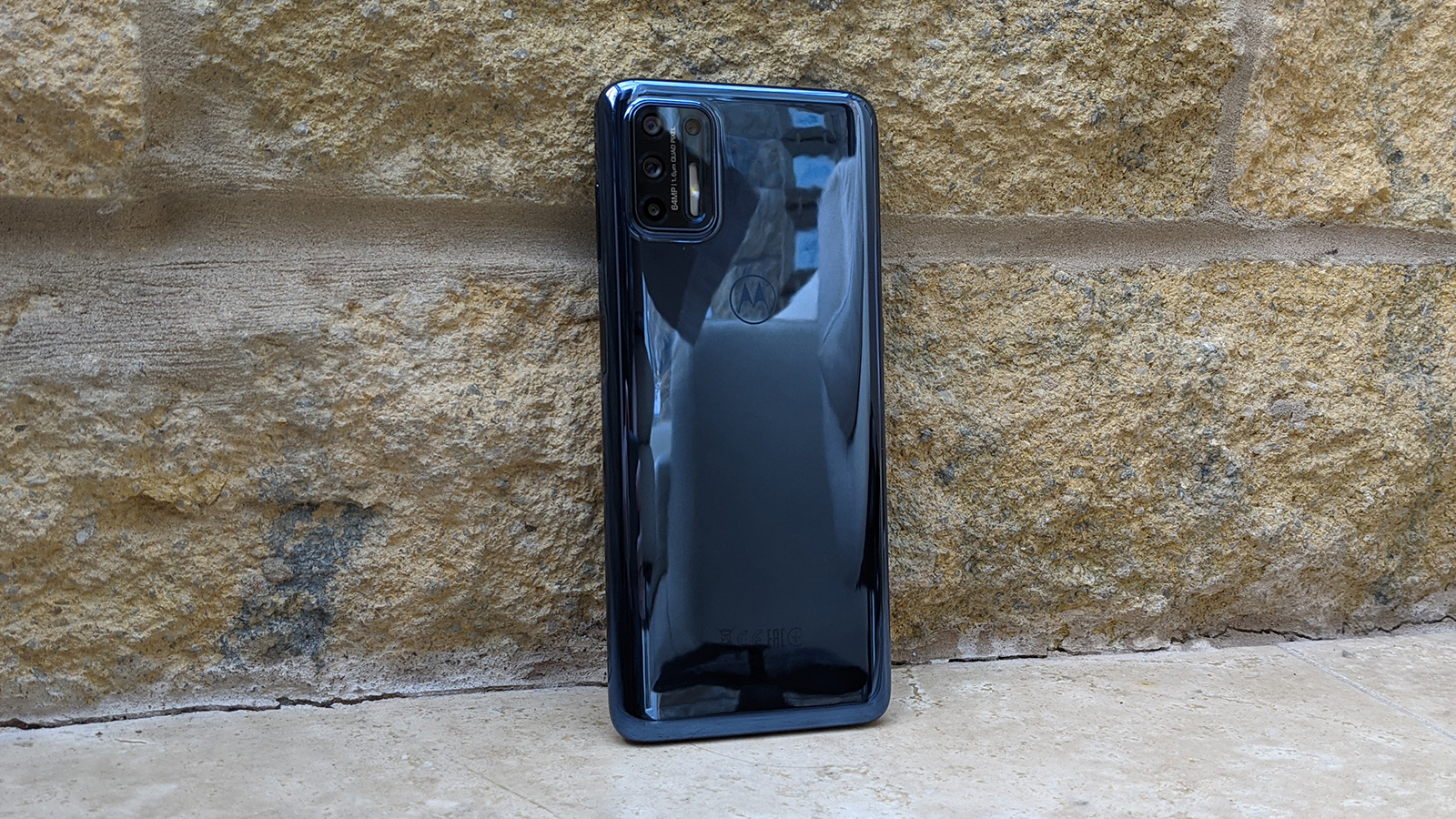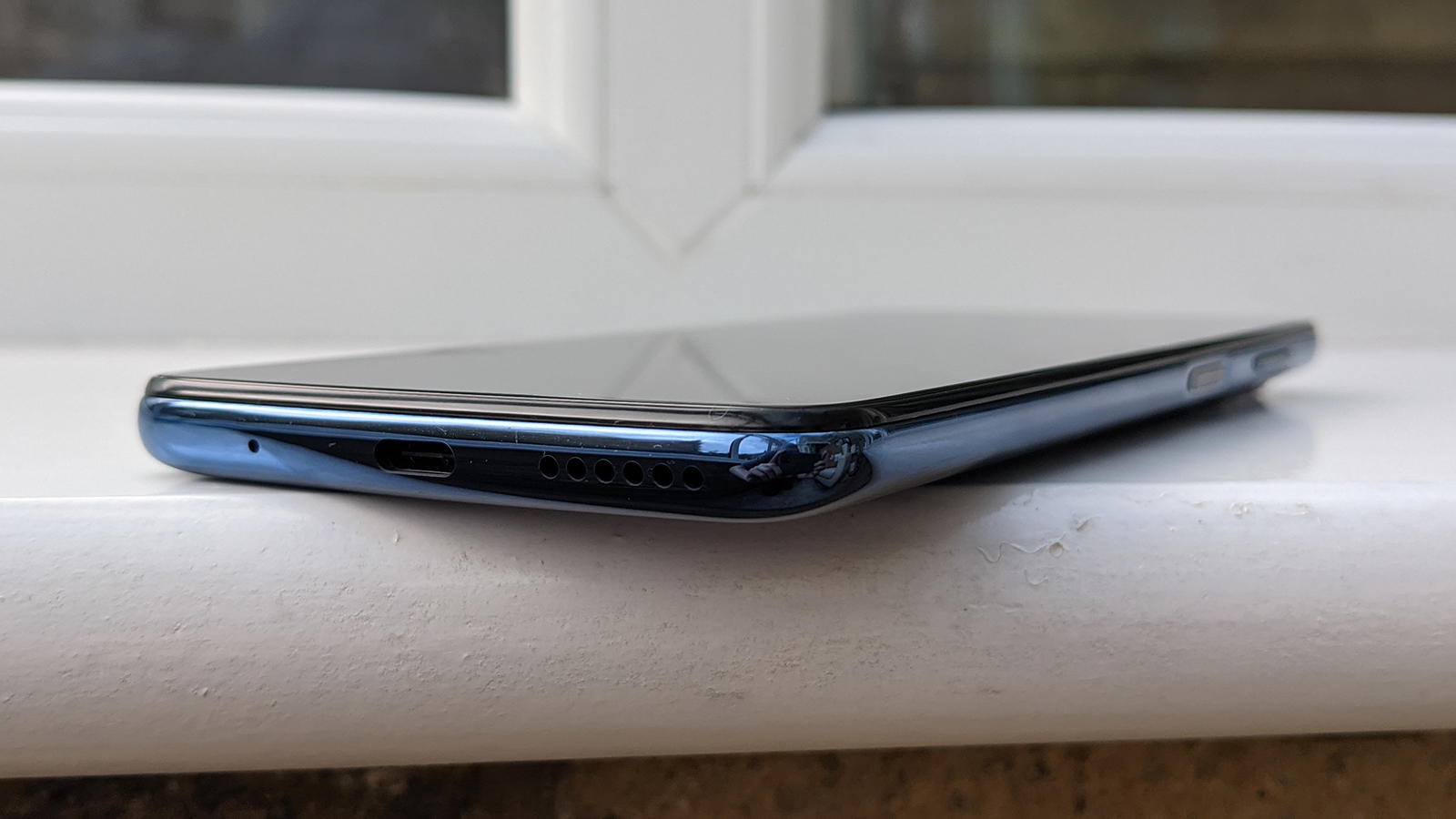TechRadar Verdict
The main selling points of the Moto G9 Plus are its large screen and its large battery – beyond that nothing really stands out about this phone, but when you factor in the price of the handset, we'd say that this is definitely a solid buy for a budget smartphone.
Pros
- +
Large, bright screen
- +
Really good battery life
- +
Camera holds its own
Cons
- -
No wireless charging
- -
Average performance
- -
No 5G connectivity
Why you can trust TechRadar
Two-minute review
If you're buying a phone on a budget then you've got a whole host of handsets to pick from, and quite a few of them are made by Motorola. The Moto G9 Plus is here to join the likes of the Moto G9 Play and the Moto G 5G Plus down at the affordable end of the market – it's a crowded field, but that does at least mean there should be a phone out there for everyone.
What you need to know about the Moto G9 Plus is that it's £250 (around $325 / AU$460), and it has a big and bright screen, a long-lasting battery, and a decent camera. If all your smartphone priorities are ticked off in that list then by all means consider this for your next upgrade – but obviously coming in at that price, some compromises have been made.
You don't get any fancy extras like wireless charging or IP68 waterproofing here, and performance is middling. The camera holds it own but it's nothing special, and the screen is a long way short of the premium OLED panels that you can find if you spend a bit more money for a mid-range phone. There's no 5G here either.
Every phone is a compromise between cost and quality, and the Moto G9 Plus gets the balance just about right, we think – Motorola has been making high quality, low cost phones for years now, and as one of the first entries in the G9 series, the Moto G9 Plus doesn't let down that tradition at all.
Perhaps the biggest problem for the Moto G9 Plus is that it has so much competition: not just the Moto phones we've already mentioned and higher priced ones like the Motorola Edge, but also handsets such as the Samsung Galaxy A51 and the Oppo A9 2020.
For a little bit less you can get the Nokia 5.3; for a little bit more, the Google Pixel 4a. There's a lot of choice here and none of these phones are terrible.
Everything considered though, if the Moto G9 Plus is in your price range, we're happy to recommend it – or at least recommend that you consider it. In just about every key area it gives you a good deal of bang for your buck, and you can't ask for much more than that.
Sign up for breaking news, reviews, opinion, top tech deals, and more.
Moto G9 Plus price and availability
- Available in the UK for £250
- Decent value for money
- Not currently available in the US or Australia
The Moto G9 Plus is out and available now in the UK, SIM-free and unlocked, from a variety of retailers – at the time of writing you can expect to pay around £250 for the phone, though check the widgets on this page for the latest deals.
That works out as around $325 / AU$460, though as yet Motorola hasn't indicated that the phone is going to be arriving in the US or Australia.

Design
- Fingerprint sensor power button
- Solid build quality
- Google Assistant button
We're pretty well used to the look of Motorola's budget handsets by this point, and the Moto G9 Plus doesn't mess with the formula too much: a big, bright screen surrounded by bezels that are slightly on the thick side, packed in a phone that's slightly on the heavy and bulky side.
Add in a glossy, plastic back and we could be talking about quite a number of Moto G phones over the past few years.
It's not a bad look by any means. You won't mistake this for a premium handset, but it's well put together and feels solid in the hand. The size of the display makes one-handed operation difficult, but not impossible – as long as your hands are fairly big. Don't get this phone if you need something compact to slip into a pocket or a bag.
We're pleased to see the 3.5mm audio jack is still here for your wired headphones, and there's also a dedicated Google Assistant button, just in case you need one.
At the bottom we've got a USB-C port for charging and data transfer, as well as a single speaker. The volume buttons and the power button are on the right hand side – the power button doubles up as a fingerprint scanner.

It's something of a subjective call, but we're not huge fans of embedding a fingerprint sensor inside the power button – it makes the button more difficult to find and hit with your fingers, while the actual scanning always seems to be more fiddly than sensors mounted on the back of phones or even under the display. To be fair to the Moto G9 Plus, this embedded sensor works quickly enough.
The rear cameras are located up in the top left corner, in the style of the Galaxy Note 20 phones. It's a perfectly fine arrangement, and the camera bump isn't too pronounced – no camera bump at all would be better, but those days seem to be gone for good (one solution to the camera bump problem would be a case – Motorola includes a basic clear plastic one with the phone).
Meanwhile, navy blue is the only color option – a rose gold version has been mentioned, but we haven't seen it in the UK yet. The navy blue is rather plain, but because the back of the phone is so shiny, it looks quite good.
Bear in mind that there's no IP68 waterproofing and dustproofing here, so you need to be careful not to drop the handset in the bath, the swimming pool, the ocean or whatever other bodies of water you find yourself in the vicinity of. It's worth remembering some of the corners that manufacturers cut to get their phones down to this sort of price point, and an IP68 rating is usually one of them.
Display
- Spacious 6.81-inch panel
- HDR10 support
- Solid brightness and contrast
The Moto G9 Plus boasts a large 6.81-inch screen, one of the biggest around at the moment. The IPS LCD panel supports HDR10 but sticks to a standard 60Hz refresh rate – there's no 90Hz or above refresh rate here – and it runs at a resolution of 1080 x 2400 pixels.
The 20:9 aspect ratio is actually really good for fitting a lot of text and website chunks on the screen at once, and if you turn it sideways then you've got a great widescreen display for watching movies too.
It's a shame there's a punch-hole camera in the top left corner to interrupt the display, but that's something we're all just going to have to live with until in-screen cameras arrive. The surrounding bezels aren't as thin as they are on the best mid-rangers and premium handsets, but they're unobtrusive enough.

The Moto G9 Plus's display is pleasingly bright and sharp for just about any task: watching streamed videos, browsing the web, flicking through photos, playing games and so on. Contrast is good and details are well defined even in the brightest and darkest areas of the screen – something the HDR10 helps with, and it's not a feature you always get with handsets in this price bracket.
While this screen is nowhere near the sort of premium OLED experience you get with the top Samsung and Apple phones, it's actually very respectable – especially given the price you're paying. Motorola is touting the 6.81-inch display as one of the biggest selling points of the Moto G9 Plus, and we can see why.
A faster refresh rate would be nice, and it's something we miss on these budget phones, but the Moto G9 Plus certainly offers one of the best (and biggest) displays you'll get at this price.
Camera
- Quad camera 64MP+8MP+2MP+2MP
- Respectable shots in good light
- Low light shots aren't too bad either
Motorola has packed four cameras into the back of the Moto G9 Plus: a 64MP main, 8MP ultra-wide, 2MP macro and 2MP depth one. There's no telephoto optical zoom, but you do get that ultra-wide option, and there is 4K video recording at 30 frames per second. On the front you've got a fairly standard 16MP camera, and both front and rear cameras come with built-in HDR processing.
Despite the quad-lens setup, there's nothing particularly special about the Moto G9 Plus camera – it does an acceptable job and that's about it. If you're buying a phone down at this price point then you're unlikely to be expecting much from the camera performance anyway, but it is one of those areas where spending a bit more to get up to the mid-range can buy you a noticeable jump in quality.
The Moto G9 Plus's rear camera can certainly hold its own against cameras on phones that are similarly priced at the moment.

Unfortunately our photo testing day happened to be a particularly drab and gloomy day in the north of England, but the phone was still able to take some eye-catching shots – landscapes and close-ups look good, and the HDR feature generally manages to keep darker and lighter areas of the picture in view.
If you're wanting to snap and shoot images for social media use then the phone certainly won't let you down. Details are reasonably well retained, noise isn't a major issue, and the shutter speed is relatively fast as well. Ultra-wide is always handy to have of course, although we found that switching to this lens does add some minor blurring to the shot.
The same average performance extends to shooting in low light – the results are okay, but no more than that. We're certainly glad that even budget phones have got to the stage where night shots aren't a complete disaster, but you're not going to get the quality of photo that you do on phones that cost a little bit more.
The Moto G9 Plus does come with a dedicated night mode, and provided you can keep the camera still enough while you're taking the photo, it's able to brighten up the darkest of areas. The processing feels a bit rough and ready compared with the best algorithms of Google, Apple and Samsung, but you have to keep the price of this phone in mind at all times – it can usually get a usable shot, and that's enough.
Macro shooting can be a bit hit and miss, though there were more hits in our testing, and provided you have time to properly set up the camera and maybe tweak one or two of its settings, the Moto G9 Plus can get some impressive photos – particularly if you're shooting on a lovely bright day outdoors (which we weren't).
Camera samples











Specs and performance
- Budget Snapdragon 730G chipset
- Satisfactory day-to-day performance
- Android 10 on board
The Moto G9 Plus comes running the lower mid-range Qualcomm Snapdragon 730G processor, which is paired here with 4GB of RAM and 128GB of storage.
That's above the bare minimum you need to run Android comfortably, but don't expect lightning-fast performance here – the Moto G9 Plus struggles a little bit with more demanding games in terms of loading speeds and frame rates, though it will run them.
Motorola has included a microSD card slot in case you want to expand the storage further, although 128GB should be enough for most people's needs. We recorded Geekbench scores of 540 for single-core, 1690 for multi-core, and 1129 for OpenCL – that's in the same sort of region as the Oppo Reno 2, which uses the same chipset.
Day-to-day use with the Moto G9 Plus is about what you would expect from a phone with these specs (and at this price point): there's the occasional stutter in app scrolling or webpage switching, and a few extra milliseconds of loading time here and there, but nothing that majorly impairs your use of the phone.

As long as you're not expecting the super-smooth responsiveness you'd get from a phone with a 90Hz or 120Hz refresh rate screen and a top-end processor, it's fine.
There's no 5G here, which may or may not matter to you – the tech isn't widely available yet, but that said, you can get some very affordable 5G phones at the moment (some of them made by Motorola).
While it's a feature you can probably live without in 2020, it's going to be more important in the years ahead, and will probably be available in just about every handset in the next couple of years.
The phone comes with Android 10 on board rather than Android 11, which is a bit disappointing but not wholly unexpected. The good news is that Motorola doesn't mess about too much with the stock version of Android that Google pushes out – all the Google apps are present and correct and there's a minimal amount of bloatware.
You do get the usual Motorola clock widget on the home page, and a rather garish live wallpaper installed by default that seems designed to show off the qualities of the large, bright display on the Moto G9 Plus. We weren't all that impressed by it but of course you can easily modify it and just about everything else about the Android interface in the space of a few seconds.
Battery life
- 5,000mAh capacity battery
- Almost two days of use
- 30W fast charging
With a 5,000mAh battery packed in here, you would expect the Moto G9 Plus battery to last, and so it does – you can easily get well into a second day on a single charge with a medium level of use, even with the large screen to power.
On most days we had plenty of battery juice left by the evening, and Motorola has done well in terms of minimizing battery usage while the phone isn't being actively used.
Our usual video streaming test suggests you could get about 10 or 11 hours of streaming in total from the phone – a very good result. We run the test with the screen on maximum brightness and the volume set low, so with a bit of tweaking you could get more time out of the handset.

There's no wireless charging available, as you would expect with a phone at this price, though the handset does support 30W fast charging – by no means the top speeds on the market in terms of battery charging, but decent enough. You should be able to get the battery from zero to full in the space of about an hour.
Battery life is an area that recent Motorola phones have often stood out in, and it's perhaps one of the main reasons to pick up the Moto G9 Plus over another phone – this is a handset that's really going to last you.
That said, with recharging taking less and less time on modern-day smartphones, the amount of time you get in between isn't quite as important as it used to be.
Should I buy the Moto G9 Plus?

Buy it if...
You're on a tight budget
It's difficult to argue with the £250 asking price of the Moto G9 Plus – that's substantially less than phones in the mid-range of the market, let alone up at the premium end.
You need a long-lasting battery
The battery life on the Moto G9 Plus impresses, and you might only need to recharge the phone every other night (or every other lunchtime, thanks to the 30W fast charging).
You like big screens
The 6.81-inch display is certainly a handful. It's by no means the best display we've ever seen, but it's big and bright and shows off everything from games to movies very well.
Don't buy it if...
You have a bit more money
If you spend another couple of hundred pounds for a mid-range phone – even one from Motorola itself – then the difference in quality in all areas is going to be noticeable.
You need zippy performance
The 4GB of RAM and the Snapdragon 730G processor hold their own when it comes to running Android, but you'll notice some slowdown in more demanding apps and games.
You'd really like 5G
Whether or not you think it's too early to be investing in 5G is really up to you – and the current coverage in your area – but you don't get next-gen connectivity with this phone.
First reviewed: November 2020

Dave is a freelance tech journalist who has been writing about gadgets, apps and the web for more than two decades. Based out of Stockport, England, on TechRadar you'll find him covering news, features and reviews, particularly for phones, tablets and wearables. Working to ensure our breaking news coverage is the best in the business over weekends, David also has bylines at Gizmodo, T3, PopSci and a few other places besides, as well as being many years editing the likes of PC Explorer and The Hardware Handbook.
